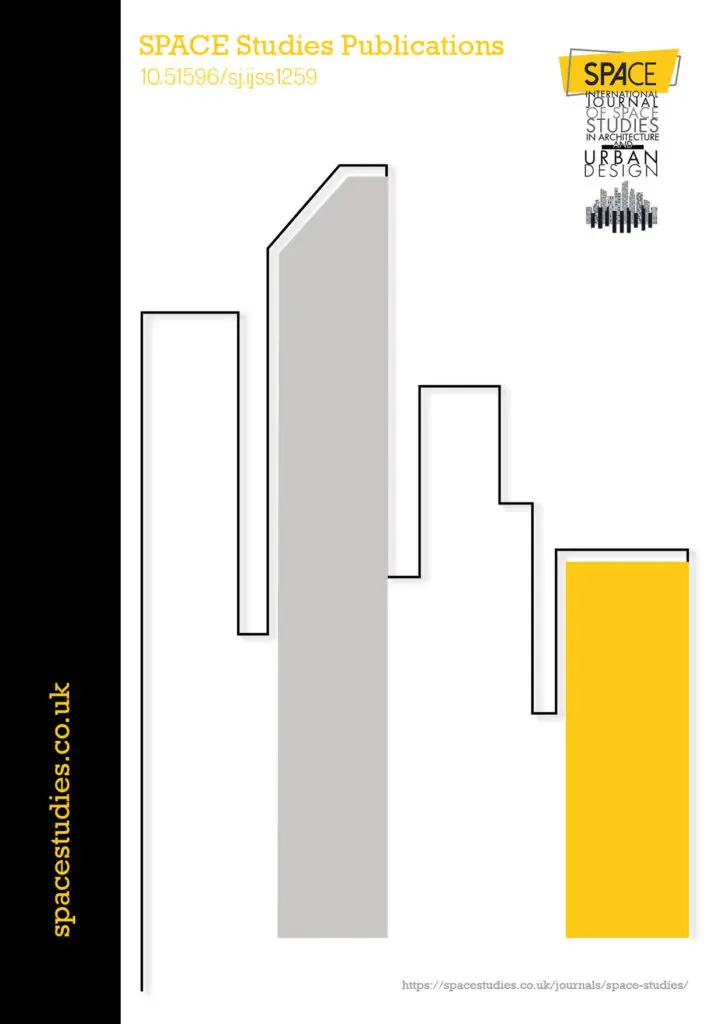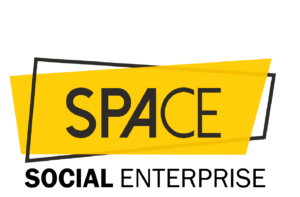SPACE International Conference 2025 on City Planning and Urban Design
25-26 September 2025

It has been projected that in three decades, two-thirds of the global population will become city dwellers, compared to 50 per cent today. Many urban concepts and planning principles have been generated to tackle the consequential challenges. Furthermore, there has been a noticeable paradigm shift towards psychological sustainability, with some theories indicating a link between the fulfilment of needs and ecological sustainability. Moreover, it has been previously stressed that environments play an important role in fulfilling people’s psychological needs. The current urban sustainable models provide solutions oriented towards physical and environmental aspects. But they lack a systematic understanding of human-environment interactions, therefore, neglect important cognitive and behavioural aspects. We argue that this misalignment between urban contexts and human needs and behaviour could be addressed if architectural and urban design started to be informed by neuroscience. This paper aims to emphasize the foundations of the ‘neuroscience-informed design’ approach.
£50.00 per Month.
Access to conference registration
Access to Journal subscription
£35.00 per Month.
Student priced discounts on conference registrations, SPACE shop and e-journals. Access to members only areas on the website. Proof of student eligibility required.
Access to Journal subscription.
This paper has been presented at the Conference “AGORA CAUMME 2020 – Mediterranean: Between Expansion and Regeneration” and selected by the Conference Scientific Committee to be published in the SPACE International Journal of Space Studies in Architecture and Urban Design. Peer review under the responsibility of the scientific committee of AGORA CAUMME 2020.
Ben-Eli, M. (2015). Sustainability: Definition and five core principles a new framework the sustainability laboratory New York, NY. http://www.sustainabilitylabs.org/assets/img/SL5CorePrinciples.pdf
Boström, M. (2012). The problematic social dimension of sustainable development: the case of the Forest Stewardship Council, International Journal of Sustainable Development & World Ecology, 19(1), 3-15. DOI: 10.1080/13504509.2011.582891
Camargo, A., Artus, J., and Spears, H. (2018). Neuroscience for cities playbook. Accessed October 17, 2018.
https://futurecities.catapult.org.uk/project/neuroscience-for-citiesa-playbook/
Coburn, A., Vartanian, O., Chatterjee, A. (2017). Buildings, Beauty, and the Brain: A Neuroscience of Architectural Experience. Journal of Cognitive Neuroscience, 29, 1521-1531. DOI: 10.1162/jocn_a_01146
Di Fabio, A., & Rosen, M. A. (2018). Opening the Black Box of Psychological Processes in the Science of Sustainable Development: A New Frontier. European Journal of Sustainable Development Research, 2(4). DOI: 10.20897/ejosdr/3933
Ehrenfeld, J. (2009). Sustainability by Design. A Subversive Strategy for Transforming our Consumer Culture. Yale University Press. ISBN: 9780300137491
Ellard, C.G. (2018). The Psychogeography of Urban Form: Building and Measuring Baukultur. Intertwining Magazine: Unfolding Art and Science.
Ellard, C.G, Shaughnessy, S.C. (2003). A comparison of visual and nonvisual sensory inputs to walked distance in a blind-walking task. Perception, 32(5), 567-78. DOI: 10.1068/p5041
Gibson, J.J. (1979). The Ecological Approach to Visual Perception. Houghton Mifflin, Boston. ISBN:
9780898599596
Goldhagen, S. W. (2017). Welcome to your world: how the built environment shapes our lives. First edition. New York, NY: Harper, an imprint of HarperCollinsPublishers. P. 275. ISBN: 9781538412718
Grimm, N.B., Faeth, S.H., Golubiewski, N. E., Redman, C.L., Wu, J.G., Bai, X.M., Briggs, J.M. (2008). Global change and the ecology of cities. Science, 319 (2008), 756-760. DOI: 10.1126/science.1150195
Karimi, K. (2018). Space syntax: consolidation and transformation of an urban research field. Journal of Urban Design, 23(1), 1-4. DOI: 10.1080/13574809.2018.1403177
Kasser, T. (2002). The high price of materialism. MIT Press.
Kasser, T. (2009). Psychological Need Satisfaction, Personal Well-Being, and Ecological Sustainability. Ecopsychology, 1(4):175-180. DOI: 10.1089/eco.2009.0025
King, M.C., Dillard, J., Dujon, V., (Eds), (2008). Understanding the Social Dimension of Sustainability. Routledge https://doi.org/10.4324/9780203892978
Kiverstein, J., & Miller, M. (2015). The embodied brain: Towards a radical embodied cognitive neuroscience. Frontiers in Human Neuroscience, 9(237). https://doi.org/10.3389/fnhum.2015.00237
Krefis, A.C., Augustin, M., Schlünzen, K.H., Oßenbrügge, J., Augustin, J. (2018). How does the Urban Environment affect health and well-being? A systematic Review. Urban Sci., 2(21). DOI: 10.3390/urbansci2010021
Laguna, J.M. (2014). Institutional Politics, Power Constellations, and Urban Social Sustainability: A Comparative-Historical Analysis. PhD Dissertation. The Florida State University College of Social Sciences and Public Policy. Retrieved from http://purl.flvc.org/fsu/fd/FSU_migr_etd-9022
Landorf, C. (2011). Evaluating social sustainability in historic urban environments. International Journal of Heritage Studies, 17(5), 463-477. DOI: https://doi.org/10.1080/13527258.2011.563788
Littig, B., & Griessler, E. (2005). Social sustainability: a catchword between political pragmatism and social theory. International Journal of Sustainable Development, Inderscience Enterprises Ltd, 8(1/2), 65-79.
Mallgrave H. F. (2011). The Architect’s Brain: Neuroscience, Creativity, and Architecture. Chichester: John Wiley & Sons. ISBN: 978-1-405-19585-0
Manzi, T., Lucas, K., Lloyd-Jones, T., Allen, J. (2010). Understanding social sustainability: key concepts and developments in theory and practice. In: Manzi, T., Lucas, K., Lloyd-Jones, T. and Allen, J. (ed.), Social sustainability in urban areas: communities, connectivity, and the urban fabric. Earthscan, London, UK. ISBN: 9781844076741
Marcus, L. (2015). Ecological space and cognitive geometry: Linking humans and environment in space syntax theory. In Proceedings of the 10th International Space Syntax Symposium, UCL, London. http://publications.lib.chalmers.se/records/fulltext/230395/local_230395.pdf
Marcus, L.H., Giusti, M., Barthel, S. (2016). Cognitive affordances in sustainable urbanism: contributions of space synthax and spatial cognition. Journal of Urban Design, 21(4), 1-14. DOI: http://doi.org/10.1080/13574809.2016.1184565
Maslow, A. H. (1954). Motivation and personality (1st ed.). Harper, New York. ISBN:
9780060419875
McNeill, L.H., Kreuter, M.W., Subramanian, S.V. (2006). Social environment and physical activity: a review of concepts and evidence. Soc Sci Med 2006; 63(4), 1011–1022. DOI: https://doi.org/10.1016/j.socscimed.2006.03.012
Mehan, A., Soflaei, F. (2017). Social Sustainability in Urban Context: Concepts, Definitions and Principles. In book: Architectural Research Addressing Societal Challenges: Proceedings of the EAAE ARCC 10th International Conference (EAAE ARCC 2016), 15-18 June 2016, Lisbon, Portugal. Edition: First Edition, Vol 1. Chapter: Social Sustainability in Urban Context: Concepts, Definitions and Principles. Publisher: CRC Press by Taylor and Francis Group. Editors: Manuel Jorge Rodrigues Couceiro da Costa, Filipa Roseta, Joana Pestana Lages, Susana Couceiro da Costa.
Penn, A. (2020). Keynote lecture at the Academy of Neuroscience for Architecture Biennial Conference.
Putnam RD. (2004). Education, Diversity, Social Cohesion and ‘Social Capital’. Dublin, Ireland: OECD Education Ministers.
Pykett, J., Osborne, T., Resch, B. (2020): From Urban Stress to Neurourbanism: How Should We Research City Well-Being? Annals of the American Association of Geographers, 1-16. DOI: https://doi.org/10.1080/24694452.2020.1736982
Raeisi, I., Kharazmi Nezhad, A., Hafezifar, M. (2010). Architectural Design Principles of Public Spaces Based on Social Sustainability Approach: A Case Study in Ardabil. Design Principles and Practices, 4(5), 99-113. DOI: 10.18848/1833-1874/CGP/v04i05/37968
Robbins, P., & Aydede, M., (Eds.), (2009). The Cambridge Handbook of Situated Cognition (Cambridge Handbooks in Psychology). Cambridge: Cambridge University Press. DOI: https://doi.org/10.1017/CBO9780511816826
Ryan, R.M., & Deci, E.L. (2000). Self-determination theory and the facilitation of intrinsic motivation, social development, and well-being. American Psychologist, 55(1), 68–78. https://doi.org/10.1037/0003-066X.55.1.68
Sheldon, K. M., Elliot, A. J., Kim, Y., & Kasser, T. (2001). What is satisfying about satisfying events? Testing 10 candidate psychological needs. Journal of Personality and Social Psychology, 80(2), 325–339. https://doi.org/10.1037/0022-3514.80.2.325
Sussman, A., & Hollander, J. B. (2015). Cognitive architecture: Designing for how we respond to the built environment. Routledge/Taylor & Francis Group. ISBN: 9780415724692
Thomas, C. F. (2015). Naturalizing Sustainability Discourse: Paradigm, Practices and Pedagogy of Thoreau, Leopold, Carson and Wilson: PhD. Thesis: Arizona State University.
United Nations, Department of Economic and Social Affairs, Population Division, 2018. World Urbanization Prospects: The 2018 Revision, Methodology. https://population.un.org/wup/Publications/Files/WUP2018-Report.pdf
US Institute of Medicine (2003). The Future of the Public’s Health in the 21st Century. National Academies Press.
Valtchanov., D., Barton, K., Ellard, C.G. (2010). Restorative Effects of Virtual Nature Settings. Cyberpsychology, Behavior and Social Networking, 13(5), 503-12. DOI: https://doi.org/10.1089/cyber.2009.0308
Valtchanov, D., & Ellard, C.G. (2015). Cognitive and affective responses to natural scenes: Effects of low level visual properties on preference, cognitive load and eye movements. Journal of Environmental Psychology, 43, 184-195. https://doi.org/10.1016/j.jenvp.2015.07.001
Varela, F.J., Thompson, E., Rosch, E. (1992). The Embodied Mind: Cognitive Science and Human Experience. MIT Press. DOI: 10.7551/mitpress/9780262529365.001.0001
Vlahov, D., Galea, S. (2003). Urban health: a new discipline. Lancet, 362 (2003), 1091-1092. DOI: 10.1016/S0140-6736(03)14499-6
Editor’s Introduction (2017). Psycho-social Bases of Sustainable Development. Psychology and Developing Societies, 29(2), vii–ix. DOI: 10.1177/0971333617721760
[1] https://spacesyntax.com/project/waterloo-south-bank/
[2] https://www.thecentriclab.com/
No potential conflict of interest was reported by the author(s).
Natalia Olszewska
Nour Tawil
Enter your email and we’ll send you more information about all activities and membership.

Registered address: 151 West Green Road, N15 5EA, London, UK
Mails to: 23A Alwold Crescent,
SE12 9AF, London, UK
+44 2037242458
+44 7780014146
space@spacestudies.co.uk
architecturalspacestudies@gmail.com
Sign in to continue
Not a member yet? Sign up now

Administrative Assistant
Deniz Bol is the Administrative Assistant at SPACE Studies, where she supports the day-to-day operations and contributes to the smooth functioning of the organization. Alongside her administrative role, Deniz is an artist with a passion for creative expression. She is currently pursuing her studies at the University of the Arts London (UAL), where she continues to develop her artistic practice. Her organizational skills, paired with her artistic background, make her a valuable asset to the SPACE Studies team, helping bridge the worlds of administration and creativity.
E-mail: denizbol@spacestudies.co.uk

Digital Marketing Consultant
Murat Oktay is the Digital Marketing Consultant at SPACE Studies, where he provides strategic guidance to enhance our digital presence and community engagement. With a keen eye for digital marketing trends and best practices, Murat plays a key role in refining our content strategy, expanding our online reach, and connecting with a wider audience. His expertise in digital tools and innovative marketing techniques aligns with SPACE Studies’ mission as a social enterprise, ensuring that our campaigns are impactful and resonate with our commitment to social responsibility in architecture and design. Outside his work with SPACE Studies, Murat stays at the forefront of digital marketing advancements, continually exploring new tools and sharing his insights with peers.
E-mail: muratoktay@spacestudies.co.uk

Marketing Manager
Santa Noella Matabaro is the Marketing Manager of SPACE Studies, bringing her expertise in strategic planning, community engagement, and relationship-building to the organization’s mission as a social enterprise. With a background in Politics & Law from the University of Kent, Santa combines analytical insights with a creative approach to advancing SPACE Studies’ vision of fostering interdisciplinary dialogue in architecture, design, and urban planning. In her role, she develops targeted campaigns and strategic partnerships, building brand presence and fostering meaningful connections with the community. Santa’s collaborative and people-centered approach enhances SPACE Studies’ impact, aligning with its commitment to social responsibility and innovation in the built environment.

Academic Content Coordinator
Betul Uckan is an architect and dedicated academic with a background in both architectural practice and research. She holds a Master of Science in Architectural Design and a Bachelor’s degree in Architecture from Istanbul Technical University, where she cultivated her interests in architectural theory and design. Betul has gained experience as a research assistant in various universities, contributing to design studios and foundational courses. She has also worked in the field as an architect with projects focused on design, modeling, and construction, and has been involved in notable projects, including Maltepe Piazza and Emaar Square in Istanbul. With her expertise spanning both digital and material architecture, Betul brings a dynamic, interdisciplinary approach to her role as the Academic Programme Coordinator.
E-mail: betuluckan@spacestudies.co.uk

Senior Researcher & Managing Editor
Arghavan Pournaderi is a senior researcher in the field of architectural conservation and restoration, with an academic foundation in architecture and specialized expertise in historic sites and buildings. Completing her PhD at the Art University of Isfahan, Iran, in 2019, her research has contributed to the understanding of Iran’s architectural heritage, with a focus on Isfahan’s urban and architectural evolution during the Safavid period. In addition to her extensive research, Dr. Pournaderi has held academic positions at various institutions in Isfahan, teaching at both undergraduate and graduate levels. Her work extends beyond academia as she contributes to SPACE Studies as Senior Researcher & Managing Editor, where she oversees scholarly initiatives that foster deeper interdisciplinary dialogue in architecture and heritage conservation.

Senior Researcher & Educational Consultant
Gregory Cowan is a Senior Researcher and Educational Consultant at SPACE Studies, where he leads initiatives that bridge academic research and practical application in architecture and urban design. He contributes his extensive experience to mentoring postgraduate students, designing educational workshops, and guiding community-focused projects. Gregory is also a freelance academic at the University of Wales Trinity St David and the University of Westminster, and founder of The Architects Coach. His expertise spans architectural workspace analysis, professional development, and positive intelligence coaching.
E-mail: gregorycowan@spacestudies.co.uk

Senior Researcher
Alison Hand is a Senior Researcher at SPACE Studies. She is a painter and writer with an MA in Painting from the Royal College of Art. Alison’s work focuses on creating absurd, unstable heterotopic spaces and dialogues with painting history. She is currently the Artist in Residence for King’s College London Philosophy Department on the Dreams and Wakeful Consciousness Research Project, exploring themes of time and simultaneity in new work. Alison has received numerous awards for her painting and is currently working with Bloomsbury Publishers on a major essay on Drawing in Contemporary Art. She is also the BA Fine Art Programme Leader at Art Academy London and co-director of Cement Arts. Her role at SPACE Studies involves leading research projects, mentoring junior researchers, and contributing to our artistic and academic initiatives.
E-mail: alisonhand@spacestudies.co.uk

Senior Researcher
Julian Wild is a Senior Researcher at SPACE Studies and the Sculpture Program Leader at The Art Academy London. With over 30 years of experience in creating and exhibiting sculptures, Julian has worked with high-profile clients such as Cate Blanchett and the University of Oxford. A fellow and former vice president (2015-2019) of the Royal Society of Sculptors, his work has been featured at venues like Modern Art Oxford and Chatsworth House. At SPACE Studies, Julian leads research projects, mentors junior team members, and conducts workshops that blend art and urban studies. In his free time, he enjoys attending academic conferences and crafting new sculptures.
E-mail: julianwild@spacestudies.co.uk

Director of Publications & Senior Researcher
Elif Suyuk Makakli (Associative Professor) earned her PhD in Architecture from the Vienna University of Technology, where she studied the impact of technology on architecture under Prof. William Alsop. With extensive experience in architectural practice in Istanbul and Vienna, she is now an Associate Professor at FMV Isik University, focusing on design education and technology. At SPACE Studies, Elif serves as both the Head of Publications and Senior Researcher, guiding scholarly content and contributing to research initiatives. She is dedicated to mentoring and fostering design innovation.
E-mail: elifsmakakli@spacestudies.co.uk

Director of Research
Sanaz Shobeiri is an architect, urban designer, and landscape urbanist, currently a postdoctoral researcher in the Department of Planning at Queen’s University Belfast. Her research focuses on age-gender inclusiveness and the interplay of architectural, historical, political, and sociocultural dimensions in urban spaces, exemplified by her project on city centres in Belfast and Tehran. Sanaz holds a PhD in Urban Planning from the University of Tehran and has a robust portfolio in sustainability and urban theory. As Head of Research at SPACE Studies, she leads innovative research initiatives, fostering collaboration and academic excellence. In her free time, Sanaz enjoys exploring urban landscapes and supporting community development.
E-mail: sanazshobeiri@spacestudies.co.uk

Creative Director
Selin Gulce Sozmen is the Creative Director at SPACE Studies, where she leads the artistic vision and design strategy for the organisation. With a background in graphic design and visual arts, Selin has been instrumental in creating visually captivating books, journals, and event posters. Her role extends to developing and coordinating workshops and creative projects, ensuring that all visual materials meet the highest standards of quality and innovation. Selin’s dedication to creativity and excellence drives the visual and creative direction of SPACE Studies, making her an essential part of the team.
E-mail: selinsozmen@spacestudies.co.uk

Founder & Executive Director
Pinar Engincan is the Founder and Executive Director of SPACE Studies, an innovative social enterprise focused on fostering interdisciplinary dialogue and education in architecture and urban design. With extensive experience as a lecturer and researcher, Pınar holds a PhD in Architecture and has led numerous academic initiatives. Her career includes curriculum development, international collaborations, and research on housing and urban policies. Passionate about bridging academia and community, she champions accessible education and consultancy services, empowering individuals to shape the built environment.
E-mail: pengincan@spacestudies.co.uk